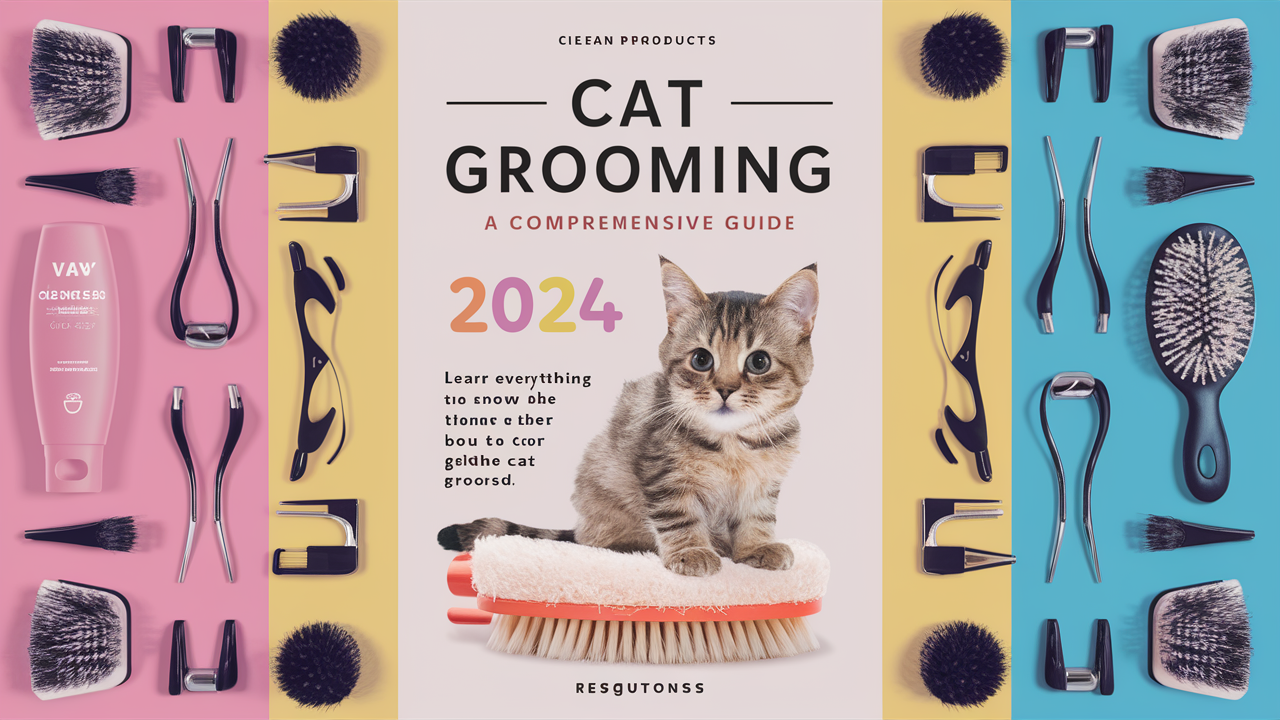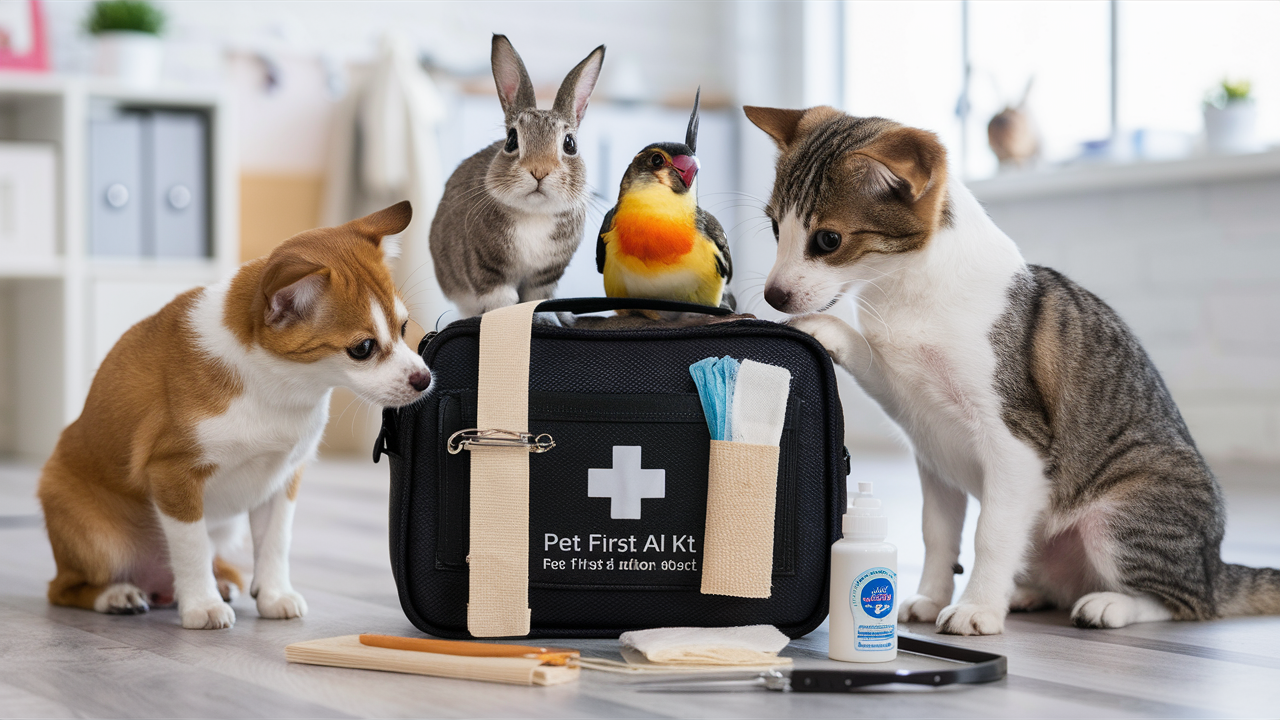“Discover essential cat grooming tips and techniques in our comprehensive guide. Learn how to groom your cat effectively at home, including brushing, bathing, and nail trimming. Keep your feline friend healthy and happy with expert advice on handling mats, choosing the right grooming tools, and more.”
Introduction to Cat Grooming

Grooming your cat isn’t just about keeping them looking cute—it’s essential for their health and happiness. But where do you start? This comprehensive guide will walk you through everything you need to know about cat grooming, from understanding their unique needs to mastering the art of brushing and bathing.
Understanding Your Cat’s Grooming Needs
Cat Grooming are known for their self-grooming habits, but they still need our help to stay clean and healthy. Different breeds have different grooming needs. While short-haired cats might only need a quick brush now and then, long-haired breeds require more attention to prevent tangles and mats.
Benefits of Regular Grooming
Regular Cat Grooming has numerous benefits. Not only does it keep your cat’s coat clean and free of mats, but it also helps you spot potential health issues early, like skin problems or parasites. Plus, grooming is a great way to strengthen your bond with your feline friend.
Tools You Need for Cat Grooming
Before you start, make sure you have the right tools. Here’s a quick checklist:
Brushes and Combs
: Different types for different coats.Nail Clippers
: Specially designed for cats.Shampoos and Conditioners
: Cat-specific products.Other Essential Tools
: Like ear cleaners and toothbrushes.
Brushing Your Cat
How Often Should You Brush?
Depending on your cat’s coat, you might need to brush daily or just once a week. Long-haired cats, like Persians, often need daily brushing to prevent tangles, while short-haired cats can get by with less frequent grooming.
Techniques for Brushing
Start gently and make it a positive experience. Use treats and praise to make your cat comfortable. Always brush in the direction of hair growth and be gentle to avoid hurting your cat.
Dealing with Shedding
Shedding is natural, but regular brushing can help manage it. During shedding season, you might need to brush more frequently to keep your home fur-free.
Bathing Your Cat
When to Bathe Your Cat
Cat Grooming are usually good at keeping themselves clean, but sometimes a bath is necessary. If your cat gets into something sticky or smelly, it’s time for a bath.
Steps to Bathe Your Cat Properly

Prepare the Bath: Use a sink or tub with a nonslip mat.
- Wet Your Cat: Use warm water and be gentle.
- Apply Shampoo: Use cat-specific shampoo and avoid the face.
- Rinse Thoroughly: Make sure no shampoo is left behind.
- Dry Your Cat: Use a towel and keep them warm until completely dry.
Tips for a Stress-Free Bath
Keep calm and speak softly to your cat. Using a cup or handheld sprayer can make rinsing easier. Have everything ready before you start to make the process quick and efficient.
Nail Trimming
Importance of Nail Trimming
Trimming your cat’s nails prevents them from getting too long and causing issues like snagging or breaking.
How to Trim Your Cat’s Nails
- Get the Right Tools: Use cat-specific nail clippers.
- Hold Your Cat Gently: Make sure they are comfortable.
- Trim the Tips: Avoid the quick, the pink area inside the nail.
Avoiding Common Mistakes
Never cut too close to the quick as it can cause pain and bleeding. If you’re unsure, trim a small amount at a time or consult a vet.
Ear Cleaning
Why Clean Your Cat’s Ears?
Regular ear cleaning helps prevent infections and removes dirt and wax.
Step-by-Step Guide to Cleaning Ears
- Check for Signs of Infection: Redness, discharge, or odor.
- Use a Cat-Safe Cleaner: Never use cotton swabs inside the ear canal.
- Gently Wipe the Outer Ear: Use a soft cloth or cotton ball.
Dental Care for Cats
Importance of Oral Hygiene
Good dental care prevents plaque buildup and dental diseases.
How to Brush Your Cat’s Teeth
Use a cat-specific toothbrush and toothpaste. Start slow and make it a positive experience.
Alternative Dental Care Options
Dental treats and toys can help keep your cat’s teeth clean if brushing isn’t an option.
Handling Hairballs
What Causes Hairballs?
Cats ingest hair while grooming, which can form hairballs.
Preventing Hairballs
Regular brushing and a hairball control diet can help reduce the occurrence of hairballs.
Grooming for Older Cats
Special Considerations for Senior Cats
Older cats may have more difficulty grooming themselves due to arthritis or other health issues.
Adjusting Your Grooming Routine
Be gentle and patient. Use soft brushes and be mindful of any sore spots.
Dealing with Mats and Tangles
How to Identify Mats
Mats are clumps of fur that can form close to the skin.
Removing Mats Safely
Use a mat splitter or consult a professional groomer if the mat is too close to the skin to avoid injury.
Seasonal Grooming Tips
Grooming in Different Seasons
Your cat’s grooming needs can change with the seasons. They may shed more in the spring and fall.
Handling Seasonal Shedding

Increase brushing frequency during shedding seasons to manage excess fur.
Common Grooming Challenges
How to Handle a Cat That Hates Grooming
Start slow, use treats, and make grooming sessions short and positive.
Professional Grooming: When to Seek Help
If your cat is severely matted or extremely uncooperative, it might be best to seek the help of a professional groomer.
Conclusion
Grooming your cat is more than just keeping them clean—it’s an essential part of their health and well-being. By making grooming a regular part of your routine, you can ensure your cat stays healthy, happy, and looking their best. So grab those brushes, clippers, and shampoos, and get started on your journey to becoming a cat grooming pro!
FAQs
How Often Should I Groom My Cat?
It depends on their coat type. Short-haired cats need less frequent grooming compared to long-haired breeds.
Can I Use Human Shampoo on My Cat?
No, always use shampoos specifically formulated for cats to avoid skin irritation.
What Should I Do if My Cat Hates Being Groomed?
Start slow, use treats, and make grooming sessions positive. Consider professional help if needed.
How Do I Know if My Cat Has a Skin Problem?
Look for signs like excessive scratching, redness, or bald patches. Consult a vet if you notice any of these symptoms.
Is Professional Grooming Necessary?
For some cats, especially those with long hair or



